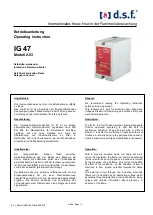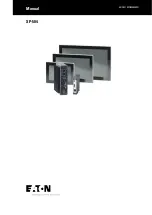
RADIATOR & COOLANT
WARNING:
Do not attempt to remove the
Radiator Cap with the engine running or on a
hot engine. Allow the engine to cool down for at
least 30 minutes before doing in maintenance
involving
the
radiator
or
cooling
system.
Radiators are under pressure and can spray steam
and hot coolant causing severe burns.
Radiator coolant levels should be checked frequently to
avoid over-heating problems. A good habit is to check the
coolant level in the Coolant Reserve Tank every 200
hours when the Oil and Oil Filter are changed. Top off the
tank if necessary.
When checking coolant levels, be sure to also inspect the
Radiator Core. Over time, dirt and grime can build up
between the fins of the core, reducing its cooling capacity.
Eventually, the core will become dirty enough that the unit will
over heat. Cores should be blown out with air or cleaned
with a garden hose. Avoid using a high-pressure washer
on the core as it can damage the cooling fins. Generators
that operate while the vehicle is traveling tend to get plugged
up more frequently.
The Radiator Coolant should be replaced annually or every
1500 hours – which ever occurs first. For all-weather
operation, a solution of 50% distilled/de-ionized water to
50% ethylene glycol anti-freeze is recommended. Do not
use pure anti-freeze in the engine – always use a 50/50
mixture!
Take care to wipe up any spilled coolant and to dispose of
used coolant properly. Anti-freeze is a poison that is very
hard on the environment and small amounts can poison pets if
left out.
When replacing the coolant, take time to inspect the
Radiator Hoses, Water Pump, Radiator and Reserve Tank
lines. Old hoses can burst, causing a sudden loss of
coolant, which can damage the engine. Hoses should feel
firm when squeezed – a soft or cracked hose should be
replaced. Check around the Water Pump for coolant leaks,
which could indicate problems with hose connections or pump
seals.
Larson Electronics, LLC
Phone: (877) 348-9680
Fax: (903) 498-3364
www.larsonelectronics.com
6
4
of 6
7
Megatower




































